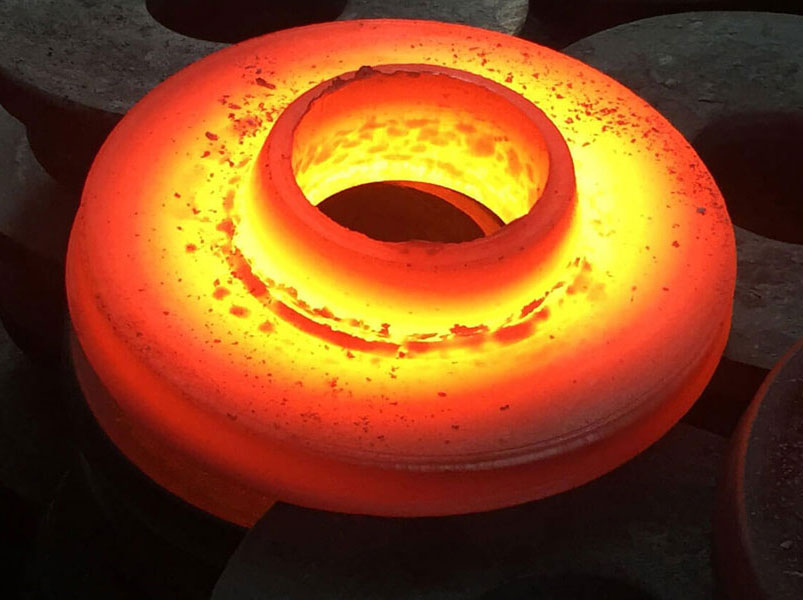Flanges Manufacturing Process?
The flange manufacturing process is mainly divided into three main aspects; forging, casting, cutting, and rolling. Generally, the basic procedure involves machining the raw materials and then shaping them into the desired shape. The flange is then sealed and customized to the applicable standard before going to a consumer.
What are the raw materials used in flange manufacturing?
The manufacturing process of flange begins with the basic amenity; the raw materials, which are sourced from the first or second world’s developed countries. These raw materials undergo rigorous testing, specifically the Factory Test Report (MTR), which determines whether the material’s chemical and physical properties are intact and beneficial to meet a minimum required standard of use. The most common materials used for the manufacture of flanges are aluminium, stainless steel, ductile iron, and low carbon/carbon steel.
How are flanges manufactured?
Initial steps:
- Step 1: Blanking
- Step 2: Machining
- Step 3: Drilling
- Step 4: Finishing
The initial manufacturing process of flanges includes blanking at first, and later machining, drilling and finishing in order to achieve the ideal specifications. Later, other processing like cutting, forging and casting can also be used for the production of flanges. Forged flanges are generally more wear-resistant but more expensive to produce. In comparison, cast flanges are less expensive to produce but can fail under high pressure.
Treatments for anti-rust capacities
In order to check the conventional anti-rust capacity, there are treatments of steel flanges which include yellow (gold) painting, varnish anti-rust oil coating, black painting or black phosphating treatment, hot-dip galvanized coating, varnish coating, electro galvanized (cold) coating, among others. For determining the smoothness or roughness of the flange, they are processed once the flange is casted, cut or forged. The type of flange finish varied, mainly depending on the application. They are commonly available in plain, machined, rolled and continuous or concentric teeth. After everything is complete, then the flanges are applied a protective coating before shipping the parts.
Summing it up
The final step in the process of manufacturing steel flanges is the packaging and dispatching of the products. These steel flanges must be taken extra care of and be packed in airworthy packaging conventions. The cases used for packaging generally include iron cages, iron pallets, wooden pallets, wooden cases, among others. The manufacturing procedures of flanges can greatly vary in terms of demand, applications and purpose. Based on that, one should opt for flanges meeting their requirements and having beneficial properties related to their concern of applications.
Arabic Translation: كيف يتم تصنيع الفلانجات، تشكيل الفلانجات، الصب، القطع، والتدوير.
عملية تصنيع الفلانجات
تُقسّم عملية تصنيع الفلانجات في الغالب إلى ثلاثة جوانب رئيسية؛ التشكيل بالضرب والصب والقطع والتدوير. عمومًا، تنطوي الإجراءات الأساسية على تشكيل المواد الخام ثم تشكيلها إلى الشكل المطلوب. يُختوى الفلانج عادةً ثم يُخصص ويُجهز للمعيار المناسب قبل التوجه إلى المستهلك.
ما هي المواد الخام المستخدمة في تصنيع الفلانج؟
تبدأ عملية تصنيع الفلانج بميزة أساسية؛ المواد الخام، التي يتم الحصول عليها من البلدان المتقدمة في العالم الأول أو الثاني. تخضع هذه المواد الخام لاختبارات صارمة، بما في ذلك تقرير اختبار المصنع (MTR)، الذي يحدد ما إذا كانت الخصائص الكيميائية والفيزيائية للمادة سليمة ومفيدة لتحقيق معيار الاستخدام المطلوب على الأقل. المواد الأكثر شيوعًا المستخدمة في تصنيع الفلانجات هي الألمنيوم والفولاذ المقاوم للصدأ والحديد الدكتيل والفولاذ منخفض الكربون / الكربون.
كيف يتم تصنيع الفلانجات؟
الخطوات الأولية:
- الخطوة 1: القطع
- الخطوة 2: التشكيل بالآلة
- الخطوة 3: الحفر
- الخطوة 4: التشطيب
تتضمن الخطوات الأولية لتصنيع الفلانجات القطع في البداية، ثم التشكيل بالآلة والحفر والتشطيب لتحقيق المواصفات المثالية. في وقت لاحق، يمكن أيضًا استخدام عمليات أخرى مثل القطع والضرب والصب لإنتاج الفلانجات. تكون الفلانجات المطروقة عادةً أكثر مقاومة للتآكل ولكنها أكثر تكلفة للإنتاج. بالمقارنة، الفلانجات المصبوبة أقل تكلفة للإنتاج ولكن يمكن أن تفشل تحت الضغط العالي.
معالجات لقدرات مقاومة الصدأ
من أجل فحص القدرة التقليدية على مقاومة الصدأ، هناك معالجات لفلانجات الصلب تتضمن الطلاء الأصفر (الذهبي)، وطلاء زيت مضاد للصدأ، والطلاء الأسود أو المعالجة بالفوسفات الأسود، والطلاء الكهربائي بالغمر الساخن، وطلاء الورنيش، والطلاء الكهربائي (البارد)، وغيرها. لتحديد النعومة أو الخشونة للفلانج، يتم معالجتها بمجرد صب الفلانج أو قطعها أو صبها. يختلف نوع التشطيب على الفلانج بشكل رئيسي، اعتمادًا على التطبيق. تتوفر عادة بشكل مشربة أو مشغولة أو متدرجة ومستمرة أو متمركزة. بعد اكتمال كل شيء، تُطبق طبقة واقية على الفلانجات قبل شحن الأجزاء.
ختامًا
الخطوة النهائية في عملية تصنيع فلانجات الصلب هي تعبئة وإرسال المنتجات. يجب أن تتم معالجة هذه الفلانجات الصلب بعناية فائقة وأن تُعبأ في تعليمات التعبئة التي تضمن سلامتها في النقل الجوي. تشمل الحالات المستخدمة للتعبئة عادة القفص الحديدي، والمنصات الحديدية، والمنصات الخشبية، والحالات الخشبية، وغيرها. يمكن أن تختلف إجراءات تصنيع الفلانجات بشكل كبير من حيث الطلب، والتطبيقات، والغرض. بناءً على ذلك، ينبغي على الشخص اختيار فلانجات تلبي متطلباته وتتمتع بخصائص مفيدة تتعلق بتطبيقاته المعنية.
Most Demanding Industrial Flanges in Marcel are Listed Below:
- Weld Neck Flange
- Slip-on Flange
- Blind Flange
- Threaded Flange
- Orifice Flange
- Lap Joint Flange
- Square Flange
- Weldolet Flange
- Nipolet Flange
- Backup Flange
